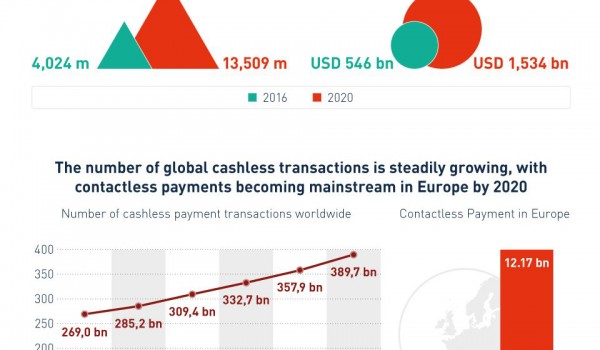Research released by Payments Canada and the Bank of Canada exploring Clearing and settlement systems and payment system modernization initiatives around the world reveals a global trend towards infrastructure enhancements that support faster payments.
Exec Summary
Most jurisdictions share a common interest in pursuing the public policy objectives of safety, efficiency and meeting the needs of users for national payment clearing and settlement systems.
However, the weight each jurisdiction applies to each public policy objective may differ, according to the jurisdiction’s priorities or payment system agenda. In addition, every jurisdiction has its own legacy systems and processes, which may serve to either magnify or blunt the force of drivers of payment system change.
As a result, few jurisdictions have taken the exact same approach in renewing their core payment systems.
As Canada continues to engage in a dialogue to develop the approach to modernize its core payment systems, we set out to better understand the options and approaches taken in other jurisdictions. Our primary objective is to provide stakeholders, who are familiar with payment clearing and settlement processes, with a common understanding of key core payment system design considerations.
To that end, payment systems were analyzed in 27 jurisdictions, where we find the following:
- Most have added (or are in the process of adding) a new real-time retail system.
- All jurisdictions have a batch retail payment system, and most use centralized architecture. Automated clearing house (ACH) systems are the most common. Jurisdictions that maintain a batch retail payment system without centralized architecture have built additional core retail systems to provide for faster processing and enhanced functionality (e.g., real-time retail payment systems or separate systems for bill payments).
- The vast majority of jurisdictions have made major upgrades to their large-value payment systems (LVPS) in the past 10 years, keeping LVPS at the centre of core payment systems. Most LVPS have been redesigned to include liquidity-savings mechanisms (LSM), with technology to facilitate advanced liquidity management and faster retail payment system settlement.
Looking across the different payment system attributes of access, functionality, interoperability, timeliness of payments and risk management, the most prominent trends observed are the following:
- Access: Jurisdictions are opening up their core payment systems to greater numbers of direct participants. The increasing numbers of direct participants have coincided with jurisdictions upgrading core payment system technology to enable risk-reduction processes and controls.
- Functionality: Payment operators are leveraging centralized architecture to implement advanced system capabilities to provide monitoring and efficiency-boosting tools (e.g., liquidity management tools) for participants and value-added services for end-users.
- Interoperability: Payment systems are expanding their degree of interoperability (automation), mostly between core infrastructure and other domestic payment systems and, in some cases, cross-border systems.
- Timeliness: Most jurisdictions have introduced (or are developing) separate retail payment systems for direct credit transactions that provide funds access in real or near real time.4 Depending on the features of the batch retail system, real-time systems can gain wider usage by being designed to serve either business or consumer payments.
- Risk management: Most jurisdictions are making payment system changes to reduce credit risk exposures, such as through more frequent retail payment system settlement and expanding LVPS processing capabilities.
The vast majority of jurisdictions have upgraded more than one core payment system. In the jurisdictions that have made technological advancements to more than one core payment system (e.g., a real-time system and batch retail system, or to a retail system and a wholesale system) the result has been highly interoperable, yet distinct, core systems that are complementary in meeting public policy objectives. Here we observe four distinct core payment system configurations emerging:
- Enhanced large-value payment systems (LVPS) that can process large volumes of retail payments. LVPS are operated alongside batch retail systems with centralized architecture (e.g., an ACH). In this configuration, the LVPS provides safety and speed, and the batch system provides enhanced functionality and services for end-users.
- ACH systems supplemented with new real-time (or near real-time) retail payment systems. The ACH provides liquidity cost efficiencies and offers rich services for participants and end-users, but with a delay in the availability of funds for payees. The real-time retail payment system provides end-users with an option for faster funds availability where needed.
- Settlement before exchange (SBE) batch retail systems supplemented by new real-time retail payment systems. The SBE systems use an integrated retail and settlement system process that minimizes credit risk, while offering the potential to also improve batch item timeliness and functionality. The real-time systems provide participants and end-users more timely payment options.
- Decentralized batch retail payment systems supplemented by additional core payment systems with centralized architecture to offer more feature-rich and timely payment options.
Conclusion
In sum, most jurisdictions surveyed have made changes to improve (or are in the process of improving) their core payments systems. As the trends provided above suggest, there are multiple approaches to consider in core payment system modernization.
As each jurisdiction considers their course, they need to determine their specific modernization objectives, based upon how they weigh their public policy objectives, their drivers and needs, and the gaps resulting from their legacy systems.
A solid understanding of the modernization objectives, articulated from a country’s unique set of circumstances can form the foundation for a holistic, multi-system plan to modernize core payment systems.




